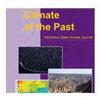Duration and ice thickness of a Late Holocene outlet glacier advance near Narsarsuaq, southern Greenland
IF 3.8
2区 地球科学
Q1 GEOSCIENCES, MULTIDISCIPLINARY
引用次数: 0
Abstract
Abstract. Greenland Ice Sheet (GrIS) outlet glaciers are currently losing mass, leading to sea level rise. Reconstructions of past outlet glacier behavior through the Holocene help us better understand how they respond to climate change. Kiattuut Sermiat, a southern Greenland outlet glacier near Narsarsuaq, is known to have experienced an unusually large Late Holocene advance that culminated at ∼1600 cal yr BP and exceeded the glacier's Little Ice Age extent. We report sedimentary records from two lakes at slightly different elevations in an upland valley adjacent to Kiattuut Sermiat. These reveal when the outlet glacier's surface elevation was higher than during the Little Ice Age and constrain the associated outlet glacier surface elevation. We use bulk sediment geochemistry, magnetic susceptibility, color, texture, and the presence of aquatic plant macrofossils to distinguish between till, glaciolacustrine sediments, and organic lake sediments. Our 14C results above basal till recording regional deglaciation skew slightly old due to a reservoir effect but are generally consistent with regional deglaciation occurring ∼ 11 000 cal yr BP. Neoglacial advance of Kiattuut Sermiat is recorded by deposition of glaciolacustrine sediments in the lower-elevation lake, which we infer was subsumed by an ice-dammed lake that formed along the glacier's margin just after ∼ 3900 cal yr BP. This timing is consistent with several other glacial records in Greenland showing neoglacial cooling driving advance between ∼ 4500–3000 cal yr BP. Given that glaciolacustrine sediments were deposited only in the lower-elevation lake, combined with glacial geomorphological evidence in the valley containing these lakes, we estimate the former ice margin's elevation to have been ∼ 670 m a.s.l., compared with ∼ 420 m a.s.l. today. The ice-dammed lake persisted until the glacier surface fell below this elevation at ∼ 1600 cal yr BP. The retreat timing contrasts with overall evidence for cooling and glacier advance in the region at that time, so we infer that Kiattuut Sermiat's retreat may have resulted from reduced snowfall amounts and/or local glaciological complexity. High sensitivity to precipitation changes could also explain the relatively limited Little Ice Age advance of Kiattuut Sermiat compared with the earlier neoglacial advance.格陵兰岛南部Narsarsuaq附近晚全新世出口冰川推进的持续时间和冰厚
摘要格陵兰冰原(GrIS)出口冰川目前正在失去质量,导致海平面上升。对全新世过去出口冰川行为的重建有助于我们更好地理解它们是如何应对气候变化的。Kiattuut Sermiat是靠近Narsarsuaq的格陵兰岛南部的一个出口冰川,众所周知,它经历了一个异常大的晚全新世前进,在大约1600 calyr BP达到顶峰,超过了冰川的小冰期范围。我们报告了在kiattuut semat附近的一个高地山谷中海拔略有不同的两个湖泊的沉积记录。这揭示了何时出口冰川的表面高度高于小冰期,并限制了相关的出口冰川表面高度。我们利用大块沉积物的地球化学、磁化率、颜色、质地和水生植物大化石的存在来区分湖泊沉积物、冰湖沉积物和有机湖泊沉积物。我们在基岩上的14C结果显示,由于储层效应,区域冰川消融的时间略微偏老,但总体上与发生在~ 11000 cal yr BP的区域冰川消融一致。Kiattuut Sermiat的新冰川推进是由低海拔湖泊的冰川沉积物沉积记录的,我们推断这些沉积物是在约3900 cal yr BP之后沿着冰川边缘形成的冰坝湖泊所包含的。这一时间与格陵兰岛的其他几个冰川记录一致,表明新冰川冷却在~ 4500-3000 cal yr BP之间推动了前进。考虑到冰湖沉积物只沉积在低海拔的湖泊中,结合含有这些湖泊的山谷中的冰川地貌证据,我们估计以前的冰缘海拔为~ 670 m a.s.l。,与~ 420 m a.s.l相比。今天。冰坝湖一直存在,直到冰川表面在约1600 calyr BP下降到这个高度以下。撤退时间与当时该地区冷却和冰川推进的总体证据形成对比,因此我们推断Kiattuut Sermiat的撤退可能是由于降雪量减少和/或当地冰川复杂性造成的。对降水变化的高度敏感性也可以解释与早期的新冰川推进相比,Kiattuut沼泽的小冰期推进相对有限。
本文章由计算机程序翻译,如有差异,请以英文原文为准。
求助全文
约1分钟内获得全文
求助全文
来源期刊

Climate of The Past
地学-气象与大气科学
CiteScore
7.40
自引率
14.00%
发文量
120
审稿时长
4-8 weeks
期刊介绍:
Climate of the Past (CP) is a not-for-profit international scientific journal dedicated to the publication and discussion of research articles, short communications, and review papers on the climate history of the Earth. CP covers all temporal scales of climate change and variability, from geological time through to multidecadal studies of the last century. Studies focusing mainly on present and future climate are not within scope.
The main subject areas are the following:
reconstructions of past climate based on instrumental and historical data as well as proxy data from marine and terrestrial (including ice) archives;
development and validation of new proxies, improvements of the precision and accuracy of proxy data;
theoretical and empirical studies of processes in and feedback mechanisms between all climate system components in relation to past climate change on all space scales and timescales;
simulation of past climate and model-based interpretation of palaeoclimate data for a better understanding of present and future climate variability and climate change.
 求助内容:
求助内容: 应助结果提醒方式:
应助结果提醒方式:


